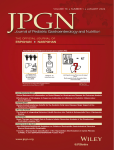Proabsorptive Effects of Modified Tapioca Starch as an Additive of Oral Rehydration Solutions
Submitted May 23, 1997
This article is accompanied by an editorial. Please see: Rhoads JM. Oral rehydration pudding? J Pediatr Gastroenterol Nutr 1998;27:114-115.
ABSTRACT
Background:
Partially hydrolyzed starches from staple cereals, obtained by heat or by enzymatic treatment, are often used in the formulation of homemade or extemporaneously used oral rehydration solutions used in developing countries. Conflicting or anecdotal results obtained thus far could be clarified with a standardized preparation tested under well-controlled laboratory conditions.
Methods:
A modified commercial tapioca starch was tested. Textra (National Starch and Chemical Co. Bridgewater, NJ, U.S.A.) added at 0, 5 or 10 g/l to an oral rehydration solution with 90 mM sodium and 111 mM glucose, in 30 rats malnourished by a protein-deficient diet for 3 weeks and in 26 well-fed control animals, using a one-pass jejunal perfusion.
Results:
In protein-deficient rats, Textra stimulated sodium absorption at 5 and 10 g/l (mean ± SEM); 0 g/l Textra: 160 ± 13 nmol/min × cm; 5 g/l Textra: 406 ± 31 (p < 0.0001); and 10 g/l Textra 230 ± 27 (p < 0.02). Potassium absorption was comparably increased. Textra also improved net water absorption and the water influx:efflux ratio. Glucose absorption was increased only at 10 g/l Textra. In control rats, Textra improved sodium and net water absorption at 5 g/l, but not at 10 g/l Textra; but the influx:efflux ratio and potassium absorption were unaltered.
Conclusions:
These data, obtained in normal and protein-deficient rats, support the view that modified starch is a potentially useful, energy-rich additive for oral rehydration solution, which does not introduce an osmotic penalty.




